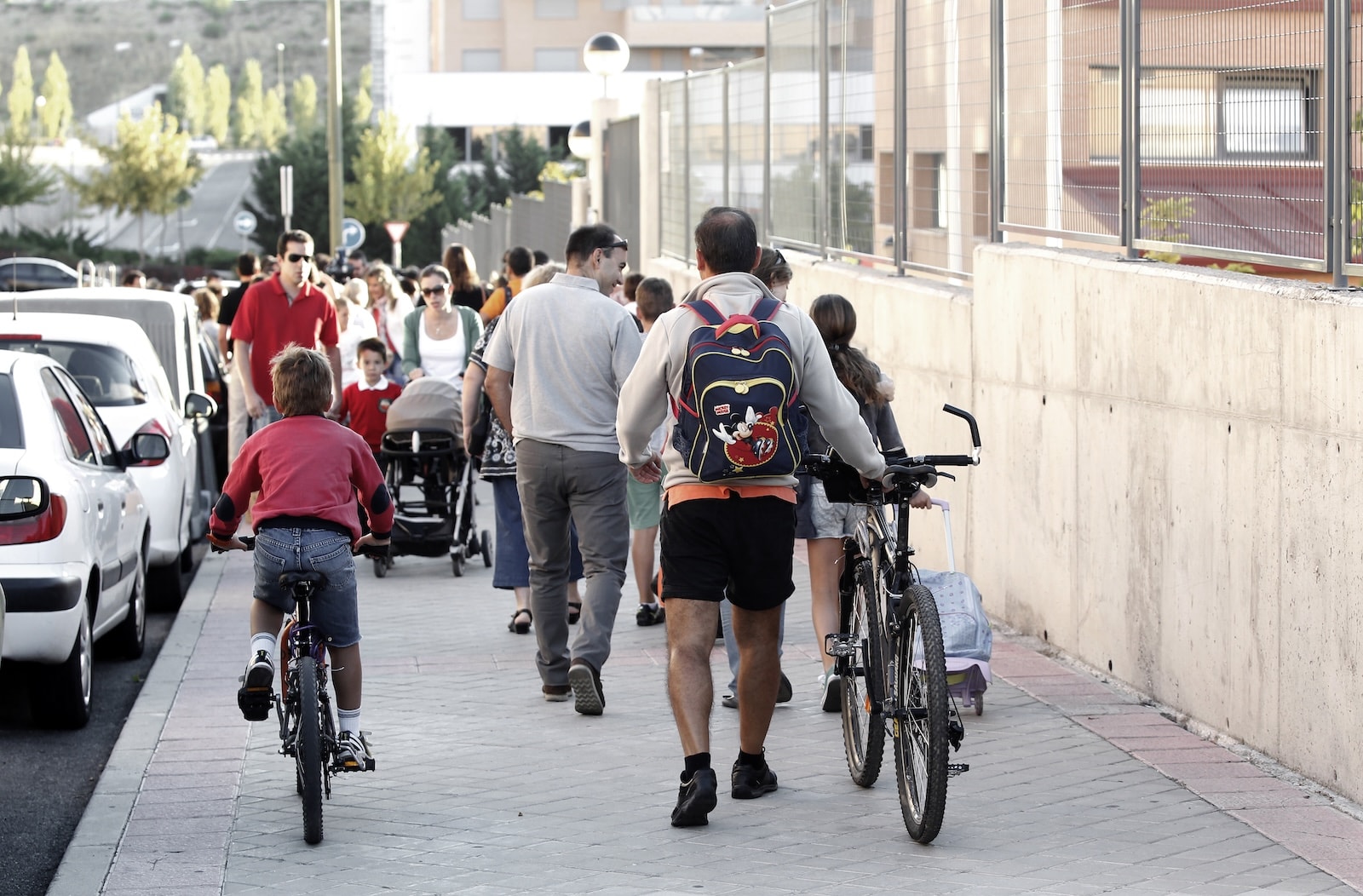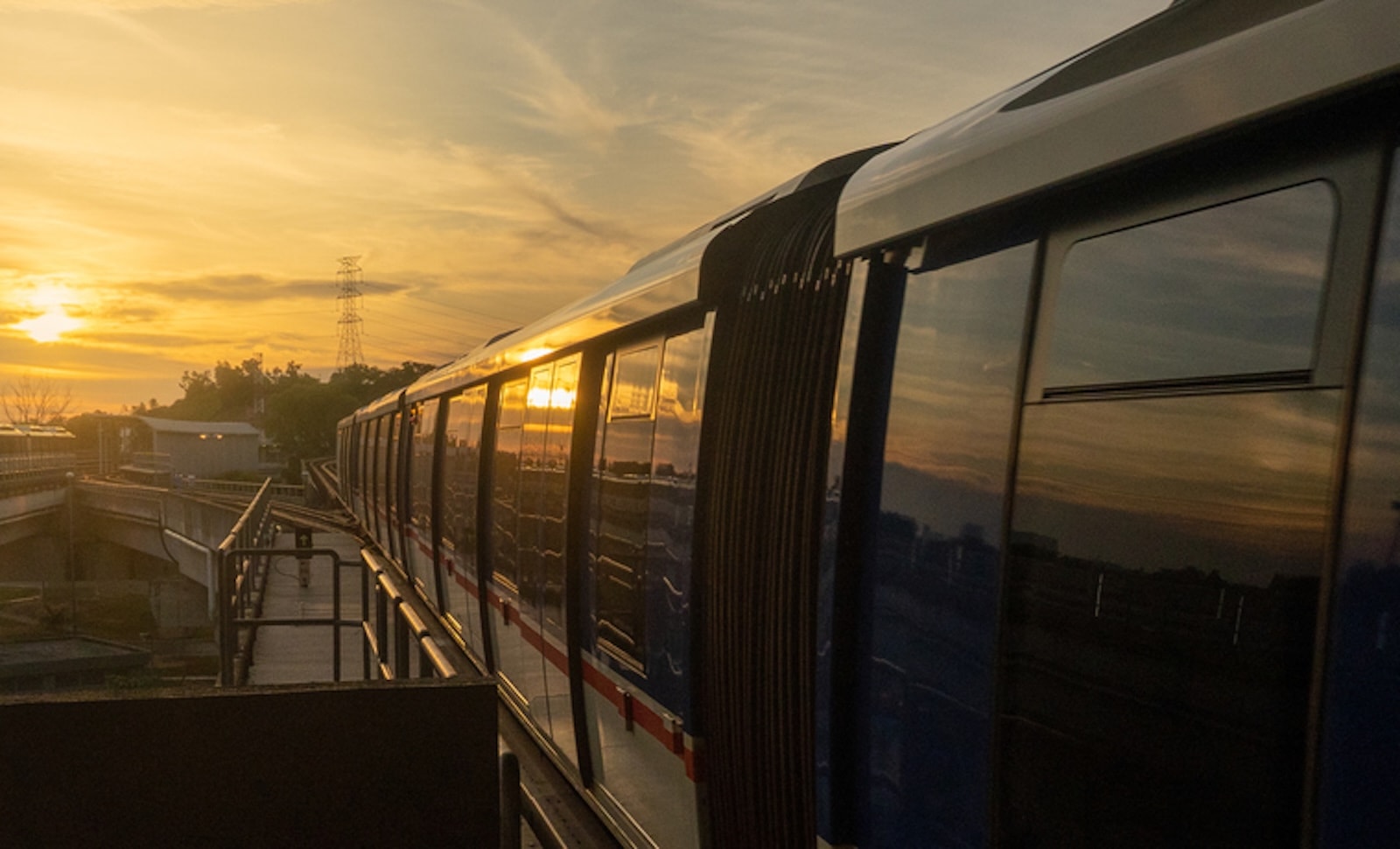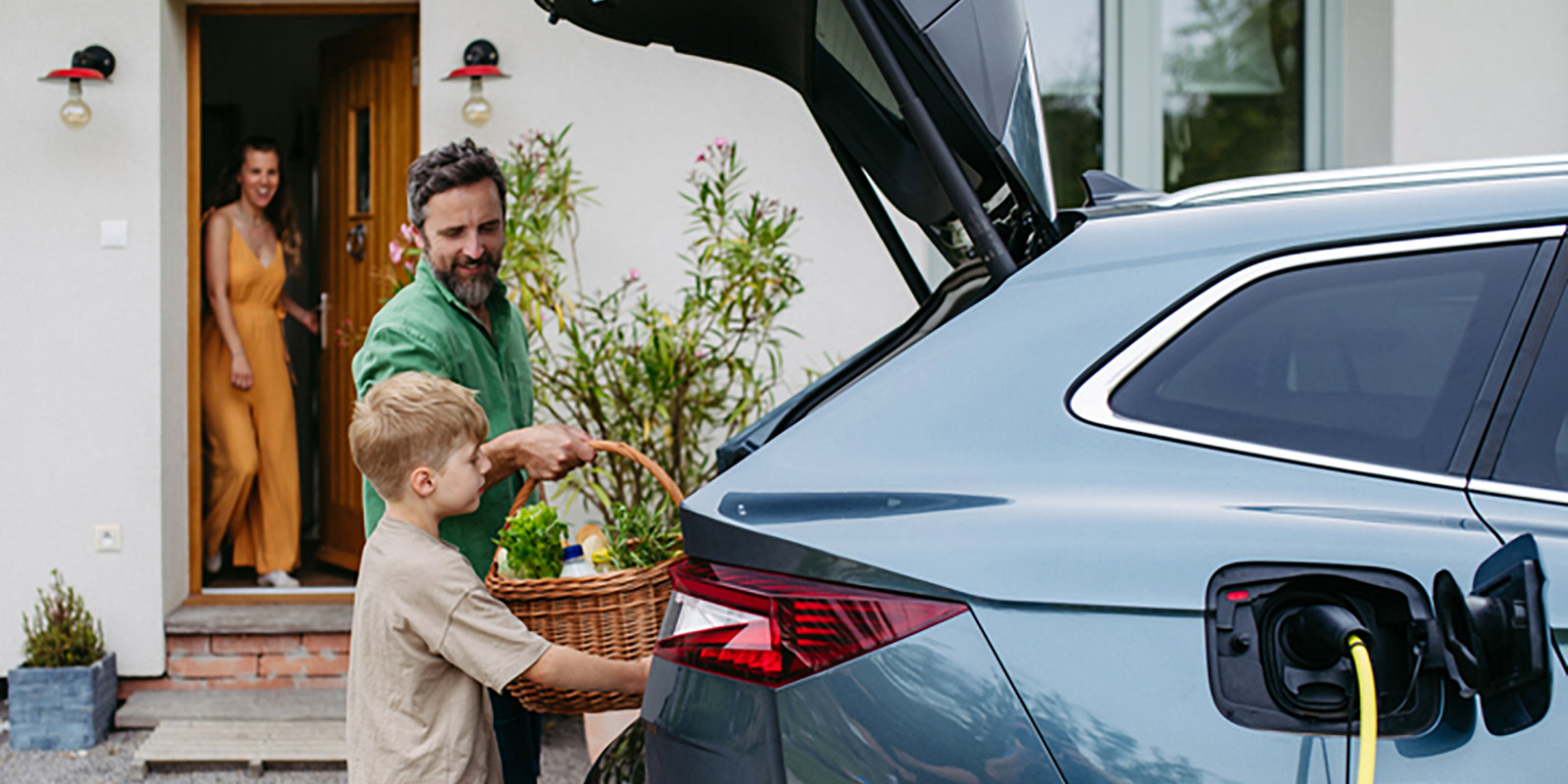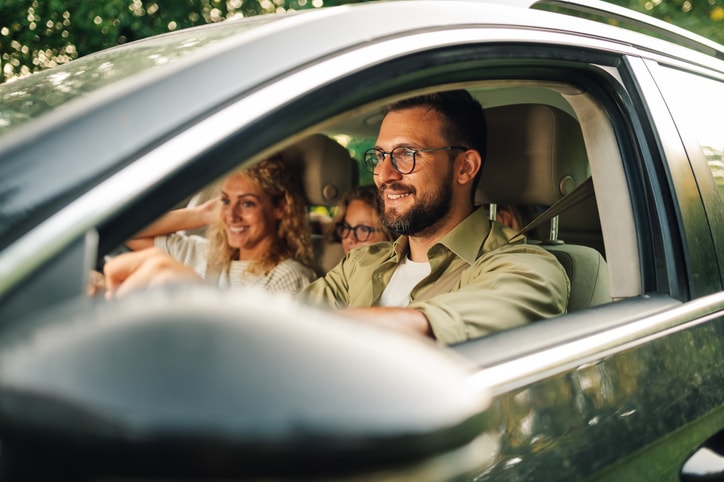Tuesday, August 26, 2025
There are many options for getting to class, such as public transportation, bike buses, and walking buses, which are not only more sustainable but also have a positive impact on children's development and social skills. Although cars remain a popular choice in many cases, promoting shared transportation can offer benefits for both families and the environment.
Photo: EFE - Ángel Díaz
Traffic jams, double-parked cars, honking horns, people rushing... This common scene repeats itself every day at the beginning and end of the school day, reflecting the fast pace that characterizes our routines. For many families, cars are a practical and quick solution for managing their daily lives. However, students also have other options for reducing congestion around schools and making school transportation more sustainable. In Spain, this philosophy is already reflected in legislation, the Sustainable Mobility Law, which is currently awaiting a vote in committee.
The way students get to school varies depending on the size of the area where the school is located. Large cities have better transport infrastructure and public transport networks, such as buses and subways, which reduce traffic congestion and are one of the most popular options for students. Equally popular, although less common, are school bus routes, a system of pick-up at a specific point at a specific time that follows a set route. In the Community of Madrid, for example, only 12% of its 3,533 schools have this system.
However, in other autonomous communities in less populated areas, a solution has been found to promote rural mobility: shared school transport, which takes advantage of empty seats on school buses so that residents of nearby municipalities can use them. More than 43,000 students in Galicia from around 500 schools use this integrated system, which, according to the regional government, has also helped almost a million users.
Whether exclusive to students or shared, public or private, there is room to improve the positive impact of transportation on the environment through measures such as implementing more efficient school buses that incorporate electric or hybrid engines, or optimizing routes using artificial intelligence to travel fewer miles and reduce emissions. An example of this is the United States, which, with half a million school buses, has a long tradition in this type of transport. Many of its cities are choosing to renew their fleets with electric and hybrid school buses, which are 60% more energy efficient and can save schools an average of $2,000 per year in fuel and $4,400 in maintenance.
There, the platform "BusWhere?" has developed AI-based technology that facilitates school bus tracking, intelligently assigns drivers and vehicles, monitors driver behavior to anticipate potential hazards, and facilitates proactive communication with children and their parents.
On the other side of the world, a school on wheels travels the streets of New Delhi, India, every day to provide children from disadvantaged areas with access to basic education and food. The school takes the form of four ‘buses of hope’ that have a positive impact on 480 children every day thanks to a project conceived by the TejasAsia organization.
Walking and cycling to school
When schools are located within walking distance of students' homes, other alternatives that do not require road transport become available. Firstly, there is the bike bus, which is a group of children who cycle together from home to school and back. Like a school bus, this model has a predefined route with departure and arrival points and a set timetable, and the safety of the group ensures that it is a risk-free experience for the children.
The BicibúsLAB mobile app and its innovative methodology have helped set up more than 40 bike bus routes in 30 schools in Barcelona with different models, such as “family bike buses, with volunteer family members, with monitors or external volunteers, mixed bike buses, and autonomous bike buses.” Meanwhile, in Madrid, the city council has joined the European STARS program, which aims to increase the number of students who use bicycles to get to and from school.
If you don't know how to ride a bike, the walking bus replaces bicycles with your own legs to make this journey on foot in a group. One of the leaders in this field is the Madrid town of Torrelodones, whose council has been offering free transportation to primary school children via different pre-established routes for over ten years. In addition, for the 2025/2026 school year, this service has been extended to include afternoon routes home.
Electric scooters, considered a sustainable personal mobility vehicle (PMV) suitable for short journeys, are also attracting many young people as a quick way to get to school. However, it should be noted that their use is restricted to those over the age of 16 and to a maximum speed of 25 kilometers per hour in urban areas.
Infrastructure and multiple benefits
Opting for more sustainable alternatives for getting to middle school or high school has numerous benefits, not only in school zones by reducing traffic congestion, but also because these options enhance young people's social skills, create a sense of community even before classes begin, and help combat sedentary lifestyles at an early age.
These initiatives to improve school transport must go hand in hand with improvements in public infrastructure to ensure a safe experience. Wider sidewalks to make more room for pedestrians; bike lanes that link up with schools; bike racks where students can leave their bikes; signs to indicate areas where children are crossing; and qualified staff to guide groups are some of the measures that can transform the journey to school into a more enjoyable, enriching, and sustainable experience.
¿Te ha parecido interesante?





